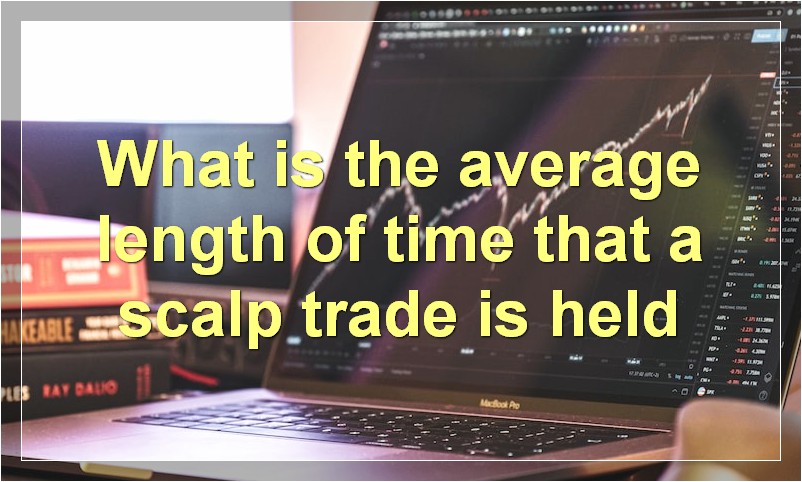The scalping strategies employed by traders can result in significant profits, but they also come with a number of risks. In this article, we’ll explore the pros and cons of scalping, as well as the potential risks involved.
What are some common scalping strategies used by traders
Scalping is a trading strategy that involves holding a position for a short period of time and closing it out for a small profit. Traders who scalp typically look for opportunities where they can make a quick buck without having to hold onto the position for very long.
There are a number of different scalping strategies that traders use, but some of the most common include:
1. catching small price movements: This strategy involves buying (or selling) when the price reaches a certain level and then quickly selling (or buying) once it moves up (or down) by a small amount. Traders who use this strategy hope to catch small price movements that they can capitalize on for a quick profit.
2. using support and resistance levels: Another common scalping strategy is to buy (or sell) when the price reaches a support or resistance level and then quickly selling (or buying) once it breaks through that level. Traders who use this strategy are hoping to catch a breakout in price that they can ride for a quick profit.
3. fading the news: This scalping strategy involves taking a position opposite of the direction that the market is moving after a major news release. Traders who fade the news are hoping to catch any overreactions by other traders that they can take advantage of for a quick profit.
No matter what scalping strategy you use, there are a few things to keep in mind if you want to be successful at it. First, you need to have a very tight stop loss in place so that you don’t give up all of your profits if the price starts to move against you. Second, you need to be patient and wait for the perfect opportunity before taking your trade. And finally, you need to have strict discipline and not overtrade – remember, scalping is all about making small profits on each trade and building them up over time.
What are the pros and cons of scalping

There are a few pros and cons to scalping that potential investors should be aware of before making any decisions.
On the plus side, scalping can be a very profitable strategy if executed correctly. Because scalpers look for small price movements, they can enter and exit trades very quickly and take advantage of these movements. This can result in a large number of successful trades over the course of a day, which can add up to a healthy profit.
However, there are also a few downsides to scalping that must be considered. First, it can be a very stressful and time-consuming strategy. Scalpers must be constantly monitoring the markets for opportunities and this can take up a lot of time and energy. Second, because scalpers are looking for small price movements, they will often experience many small losses before hitting a winner. This can lead to frustration and discouragement if not managed properly.
Overall, scalping can be a very profitable trading strategy but it does have its challenges. Potential investors should weigh the pros and cons carefully before deciding if it is the right strategy for them.
Is scalping a viable trading strategy for long-term success
Scalping, also known as snipping or taking small profits, is a trading strategy where traders make multiple trades throughout the day, each with a small profit. The goal of scalping is to make a small profit on each trade which adds up over time to create a large return on investment (ROI). Many scalpers use technical indicators and price action to find trading opportunities.
Scalping can be a viable trading strategy for long-term success if done correctly. Many experienced traders use scalping as their main trading strategy and are able to consistently make small profits that add up over time. In order to be successful at scalping, it is important to have a solid understanding of technical analysis and price action. Additionally, it is important to have discipline and stick to your trading plan.
What are some risks associated with scalping
Some risks associated with scalping are:
1. You may miss out on a big move if you exit your trade too early.
2. You may get stopped out of your trade if the market moves against you.
3. You may have to pay higher transaction costs if you trade frequently.
What types of orders are typically used when scalping
When scalping, traders typically use one of three types of orders: market orders, limit orders, or stop orders. Market orders are the most common type of order used when scalping. A market order is an order to buy or sell a security at the best available price. Limit orders are orders to buy or sell a security at a specified price. A buy limit order can only be executed at the limit price or lower, and a sell limit order can only be executed at the limit price or higher. Stop orders are orders to buy or sell a security when it reaches a specified price. A buy stop order is executed at the stop price or higher, and a sell stop order is executed at the stop price or lower.
What is the average length of time that a scalp trade is held

The average length of time that a scalp trade is held is about 15 to 20 minutes. This is because scalpers aim to make small profits off of small price movements in the market. They do this by buying and selling quickly, and holding their positions for only a short period of time.
What is the preferred time frame for scalping
There is no definitive answer to this question as different traders have different preferences. Some scalpers prefer to trade in very short timeframes, such as 1-5 minutes, while others may hold trades for longer, such as 15-30 minutes. Ultimately, it comes down to what works best for the individual trader.
Some traders prefer shorter timeframes as they feel it is easier to make quick profits in these conditions. Others may prefer longer timeframes as they can take a more relaxed approach and still generate profits. Some scalpers may even trade in multiple timeframes simultaneously in order to capture different opportunities.
Whichever timeframe is chosen, it is important to remember that scalping requires a great deal of concentration and focus. This type of trading is not for everyone, but those who are successful at it can reap significant rewards.
How many trades per day does the average scalper make
The average scalper makes between 2 and 3 trades per day. Some scalpers make more trades per day, but the average is usually between 2 and 3.
What is the win/loss ratio of successful scalpers
The win/loss ratio of successful scalpers is largely dependent on the market conditions at the time. However, over the long term, successful scalpers typically have a win/loss ratio that is slightly above 50%. This means that for every 100 trades they make, they will make a profit on slightly more than half of them.
Can you scalp in all markets, or are there certain conditions that are more favorable
There are a number of factors to consider when scalping in any market, including liquidity, order flow, price action, and the spread. Certain markets may be more favorable for scalping than others depending on these conditions. For example, the forex market is typically very liquid, with a large amount of order flow and tight spreads. This makes it a good market for scalping. However, other markets such as the stock market may not be as favorable due to lower liquidity and wider spreads.

